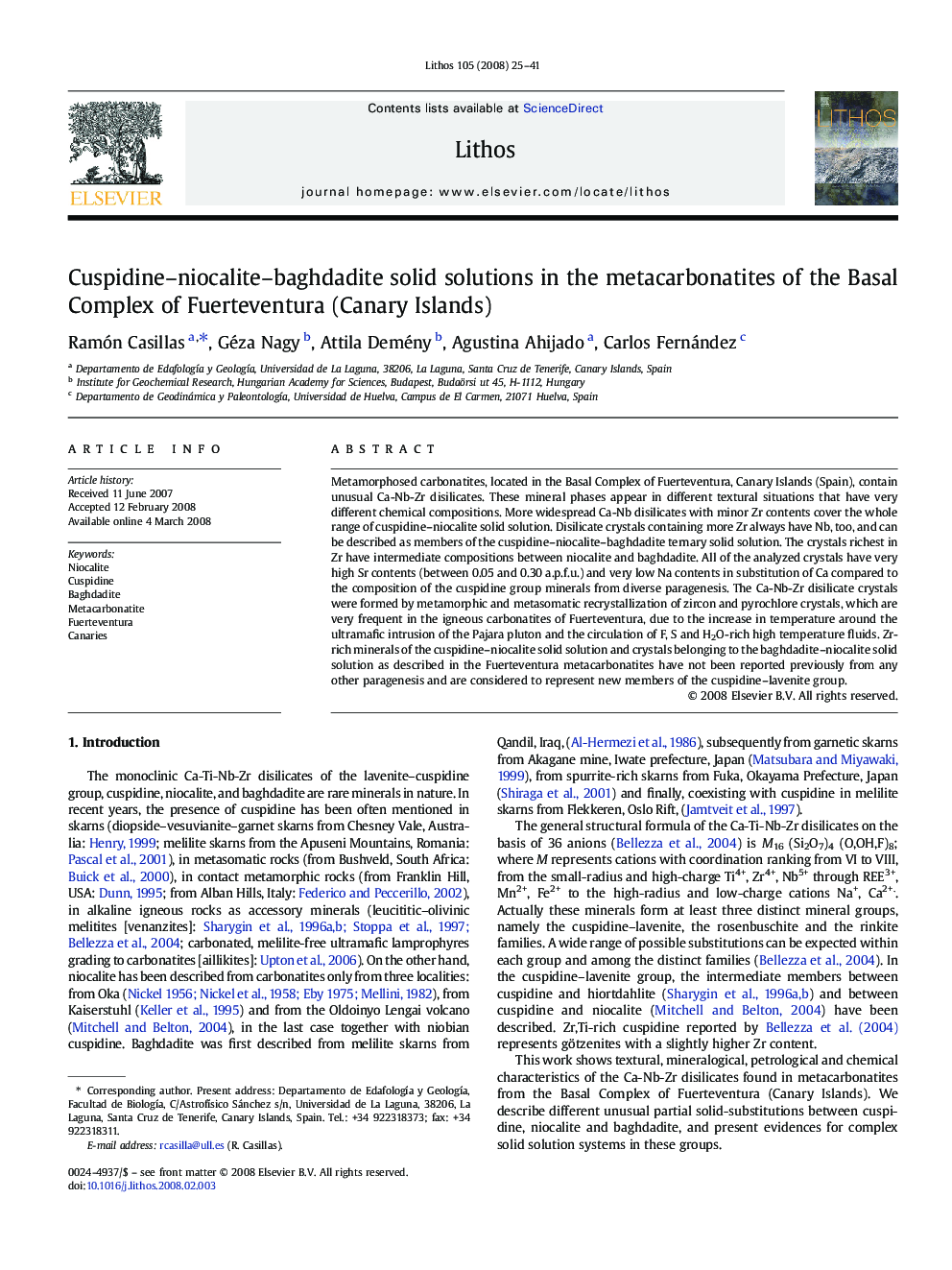| Article ID | Journal | Published Year | Pages | File Type |
|---|---|---|---|---|
| 4717386 | Lithos | 2008 | 17 Pages |
Metamorphosed carbonatites, located in the Basal Complex of Fuerteventura, Canary Islands (Spain), contain unusual Ca-Nb-Zr disilicates. These mineral phases appear in different textural situations that have very different chemical compositions. More widespread Ca-Nb disilicates with minor Zr contents cover the whole range of cuspidine–niocalite solid solution. Disilicate crystals containing more Zr always have Nb, too, and can be described as members of the cuspidine–niocalite–baghdadite ternary solid solution. The crystals richest in Zr have intermediate compositions between niocalite and baghdadite. All of the analyzed crystals have very high Sr contents (between 0.05 and 0.30 a.p.f.u.) and very low Na contents in substitution of Ca compared to the composition of the cuspidine group minerals from diverse paragenesis. The Ca-Nb-Zr disilicate crystals were formed by metamorphic and metasomatic recrystallization of zircon and pyrochlore crystals, which are very frequent in the igneous carbonatites of Fuerteventura, due to the increase in temperature around the ultramafic intrusion of the Pajara pluton and the circulation of F, S and H2O-rich high temperature fluids. Zr-rich minerals of the cuspidine–niocalite solid solution and crystals belonging to the baghdadite–niocalite solid solution as described in the Fuerteventura metacarbonatites have not been reported previously from any other paragenesis and are considered to represent new members of the cuspidine–lavenite group.
